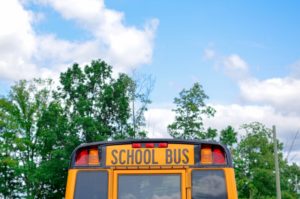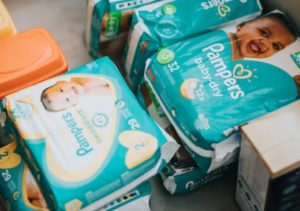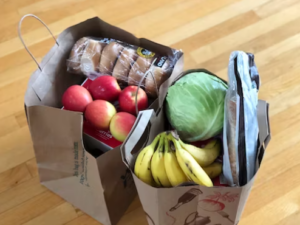The Social Impact of Sales Tax
Most discussion of sales tax takes place at the company level – from nexus determination to tax remittance and all the processes in between. We know how to quantify the impact sales tax has on a company. But what about the wider impact?
There are so many great things about working in this field. The challenge, the varied career opportunities, the continuous learning. One less talked about aspect of the job is the impact the funds from our favorite indirect tax can make in our communities and our states.
Sales tax fuels a host of social services that are a part of our everyday lives. Regardless of how perfect or imperfect the system of taxation and fund allocation is, let’s take a moment to look at the broader impact of sales tax – the impact it has on LIFE.

Sales Tax: The Backbone of Budgets
Sales tax is an effective ‘tool’ for governments to generate large sums of money at relatively low rates to consumers. Even though it can be difficult for businesses to set up sales tax collection and remittance processes, sales tax is seen as a straightforward percentage in the minds of taxpayers and easy to pay as part of a retail transaction (even though there is a fair amount of grumbling about paying sales tax).
Governments, at not just the state but also at the local levels, use tax revenue to fund and maintain state and locally-directed services like roads, public schools, and medical facilities. Sales taxes are the third largest source of state and local tax revenue overall but could be more in certain states. Sales taxes accounted for 16.6 percent of total U.S. state and local tax collections according to the Tax Foundation using fiscal year 2021 data.
States’ budgets have varying reliance on sales tax revenue given that every state has a different sales tax regime. Delaware, Montana, New Hampshire, and Oregon do not have a state or local sales tax. Alaska allows locally imposed sales tax but doesn’t have a statewide sales tax. The remaining 45 states impose a statewide sales tax and the majority of them also allow local jurisdictions to collect their own separate sales tax. 45 states rely on sales tax revenue to support public services.

Where does the money go?
Most states funnel sales tax revenue into a general fund that broadly supports a variety of public services. The largest areas of state spending are public education and health care. Tax dollars also support services such as transportation and infrastructure projects, police and fire departments, parks and recreational facilities, and economic development projects.
Sometimes states or localities earmark portions of sales tax revenue for a particular purpose, specific fund, or special project. In some cases, a state or local jurisdiction may implement a temporary sales tax increase to finance that specific purpose, fund, or project.
In 2016, Philadelphia voters agreed to a controversial city-wide soda tax to fund pre-kindergarten classes for underserved and low-income families. The Denver Preschool Program was approved by voters in 2006 and reauthorized in 2014 to extend to 2026 and is funded by a 0.15 percent sales tax.

Des Moines voters passed an additional one-cent local option sales tax in 2019 to lower the property tax rate and put additional funds towards public safety, street improvement, flood control, and abandoned house demolition – all things that improve property values. In this case, sales tax shifts the balance away from another tax while simultaneously fulfilling a specific purpose.
And it isn’t just sales taxes that are being implemented to fund specific needs. States and local governments are more often turning to fees. The state of Colorado implemented its Retail Delivery Fee (RDF), effective July 1, 2022, to fund six different needs from community access to clean transit and bridge and tunnel infrastructure.
Sales tax is frequently a ballot item come election time. For example, in November 2023, a city in Texas will be voting to renew a local sales tax for regional parks, their convention center, and airport improvements. Many states are seeing growing sales tax revenues in the wake of the Wayfair decision and taxation of online sales. Legislators and voters must decide the best use for this additional revenue.

Social Impact via Sales Tax Exemptions
Sales tax also leaves a social impact by way of exemptions. There is a movement to provide sales tax exemptions to ease the burden on specific groups of people. For example, to ease the burden on parents, we’ve been seeing more and more exemptions for diapers and other childcare products. Along the same lines, the Period Equity movement has led to menstrual products progressively becoming exempt.
Another popular sales tax exemption is for groceries. While many states have exempted groceries for a long time, it’s become a trend in southeastern states like Alabama which has maintained a full sales tax on groceries to implement sales tax cuts.
The question in these cases is what actual impact these have on easing expenses for individuals. Some believe that adding more sales tax exemptions is overall a bad idea because it shifts the burden of sales tax away from one group and onto another. Sales tax can be somewhat regressive. You pay more sales tax relative to your income the less income you have because large expenses and investments are not subject to sales tax. If you have more exemptions, you need higher rates on everything else. The opponents of selected exemptions support a lower overall sales tax rate. This is exactly what South Dakota implemented effective July 2022 when instead of implementing an exemption for groceries it lowered the state sales tax rate from 4.5% to 4.2% for a limited period.

The 30,000 Foot View
There’s something significant about working in a profession with a tax that supports so many of the services that touch aspects of our daily lives and that improve the lives of others.
Sales tax pros can take pride in the fact that accurate sales tax collection and remittance for their companies or clients has a larger social impact. You can see the effects of your carefully calculated sales tax materialize in your community when you see a pothole filled, kids at the bus stop on the way to public school, or improvements made to your local park.
You don’t always have to agree with how states and localities allocate sales tax funds to know that your work makes a difference for other people in your community or state. Sales taxes support public services that bolster a sense of community such as libraries and parks, public services that make us feel safe such as police and fire departments, and public services that make us healthier such as hospitals and mental health facilities.
You can feel good as a sales tax professional and individual taxpayer that in most cases, sales tax revenue is used for noble causes. The outcome of our work spans well beyond our offices.